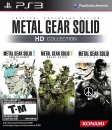curl-6 said:
starworld said:
thats not true, if the architecture has a notable advantage it will run games better, just like the super nes did against the genesis, just like the xbox did against the ps2/GC and just like the ps4 is doing now with the X1.
|
But different architctures can have different advantages. For instance, a game with heavy use of multitexturing would run better on Gamecube, but a game with normal mapping would run better on Xbox.
|
the ps2 and xbox was as different as they come, yet xbox used brute force run most ports and run them superior, here is a quote from a developer that developed for all 3 consoles, different architecture can be a problem if both consoles are close to each other power wise.
"FWIW I don't ever consider any developer who ships anything lazy.
When you're building a cross platform game, there is always an element of lowest common denominator, it's about costs (and I don't just mean financial).
PS2 was often the "lead SKU" at big publishers because of the installed base, Xbox was a version you had to do, in most cases you could write a simple version of your renderer and just drop the assets on Xbox and they would usually run faster. So you'd increase texture quality and call it done.
Usually when you dropped it on gamecube it would run slower and you'd have no memory left, so you downsample to make things fit, figure out how you could use ARAM without crippling performance and ship it.
If you wrote an XBox exclusive with no intention of ever shipping on PC, and you actually spent time optimizing there was a lot of performance to be had, usually most titles were CPU limited because then the polygon indices had to be copied into the GPU ring buffer (which wasn't actually a ring buffer). If your app was pushing a lot of geometry it could literally spend 60% of it's time doing nothing but linear memory copies.
It was possible to place jumps into the ringbuffer, to effectively "call" static GPU buffers, but it was tricky to get right because of the pipeline and the fact you had to patch the return address as a jump into the buffer so you'd have to place fences between calls to the same static buffer.
If you did this however you could trivially saturate the GPU and produce something much better looking.
On GameCube the biggest issue is it was just had pathetic triangle throughput, the 10M polygons per second (I don't remember the real number) assumes you never clip or light anything.
GameCube was DX7 class hardware for the most part, albeit a more fully featured version than ever shipped in a PC. The GPU just wasn't very fast.
As I said it's real benefit was the memory architecture and I still feel it was over engineered.
On the whole it wasn't a bad machine, but I wouldn't have said it was "more powerful than PS2)"











































